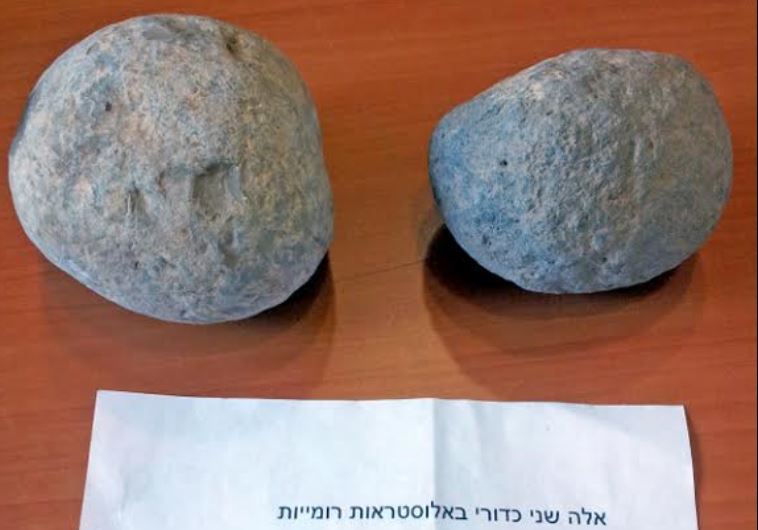Antiquities thief returns ballista balls stolen from Gamla 20 years ago
Two ancient ballista balls were left by an anonymous robber in a bag in the courtyard of the Museum of Islamic and Near Eastern Cultures.
 ballista stones from the Early Roman period(photo credit: DR. DALIA MANOR, MUSEUM OF ISLAMIC AND NEAR EASTER)
ballista stones from the Early Roman period(photo credit: DR. DALIA MANOR, MUSEUM OF ISLAMIC AND NEAR EASTER)